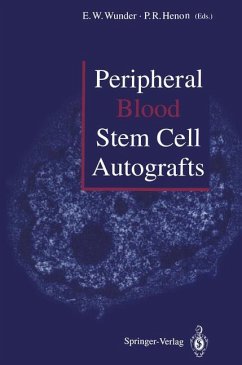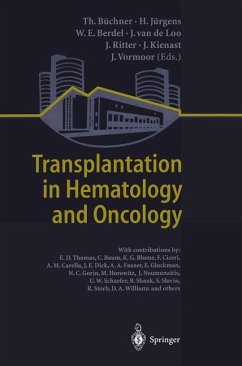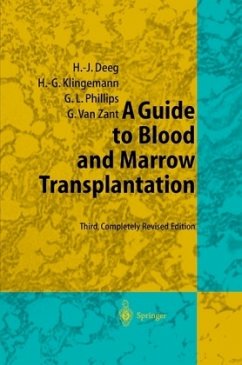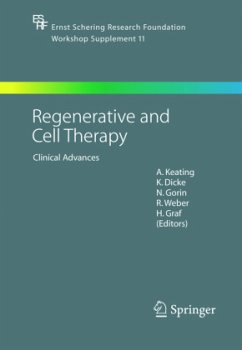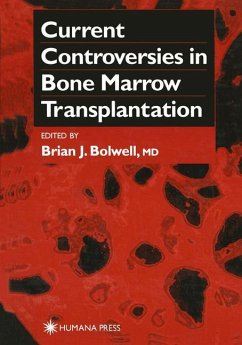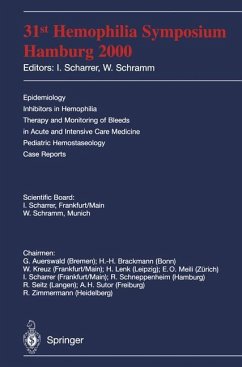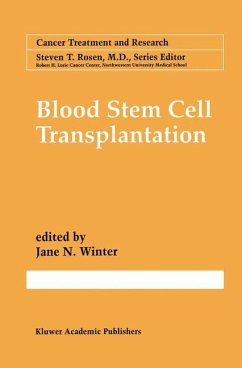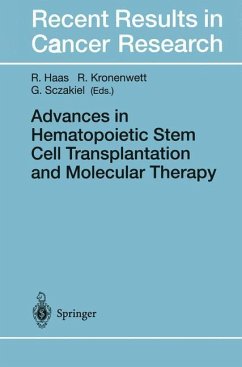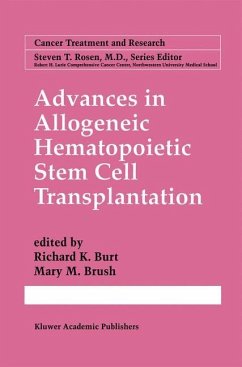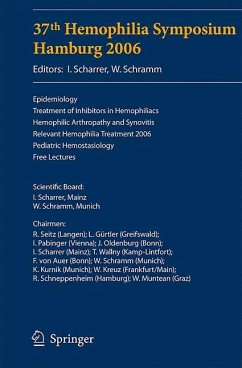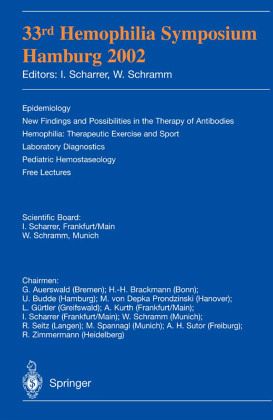
33rd Hemophilia Symposium
Hamburg 2002
Herausgegeben: Scharrer, I.; Schramm, W.

PAYBACK Punkte
19 °P sammeln!
The modern rehabilitation medicine is an important part of the comprehensive me- cal attendance of hemophiliacs. The necessary multidisciplinary team of specialists is available in a qualitative high-class rehabilitation hospital. Indispensable is the point that the coordinating medical specialist in Rehabilitation Medicine on site is skilled in the treatment of hemophiliacs. But he doesn t want and he can t replace the patient s hematologist. He is just the coordinator of the comprehensive team in the rehabilitation clinic. I hope I have shown that rehabilitation is an important topic for mos...
The modern rehabilitation medicine is an important part of the comprehensive me- cal attendance of hemophiliacs. The necessary multidisciplinary team of specialists is available in a qualitative high-class rehabilitation hospital. Indispensable is the point that the coordinating medical specialist in Rehabilitation Medicine on site is skilled in the treatment of hemophiliacs. But he doesn t want and he can t replace the patient s hematologist. He is just the coordinator of the comprehensive team in the rehabilitation clinic. I hope I have shown that rehabilitation is an important topic for most patients with hemophilia. References 1. Neuntes Sozialgesetzbuch (SGB IX) Rehabilitation und Teilhabe behinderter Menschen vom 19. 6. 2001 (BGBl. I,S. 1046) 2. Kurth A, Kreuz W, Scharrer I: "Die orthopädische Behandlung von muskulo-skelettalen Komplikationen der Hämophilie". Dtsch Arztebl 2002; 99: A 2928 2935 [Heft 44] 3. BAR: Wegweiser Rehabilitation und Teilhabe behinderter Menschen,11.Auflage,Fra- furt/Main 2001 4. BAR und Sozialpsychologisches Institut (Köln): Teamentwicklung in der Rehabilitation, Franfurt/Main Juni 2000 5. Buzzard B, Beeton K: "Physiotherapy, Management of Haemophilia", Blackwell Science, Oxford 2000 6. Rizzo Battistella L: "Rehabilitation in Haemophilia options in the developing world", Haemophilia, 1998, 4, 486 490 7. Beeton K S: "Physiotherapie bei erwachsenen Patienten mit Hämophilie". In Rodriguez- Merchan E C,Goddard N J u. Lee C A (Hrsg): Orthopädische Aspekte der Hämophilie,Stork Medien,Bruchsal 2002 (dt. Übersetzung) 8.





